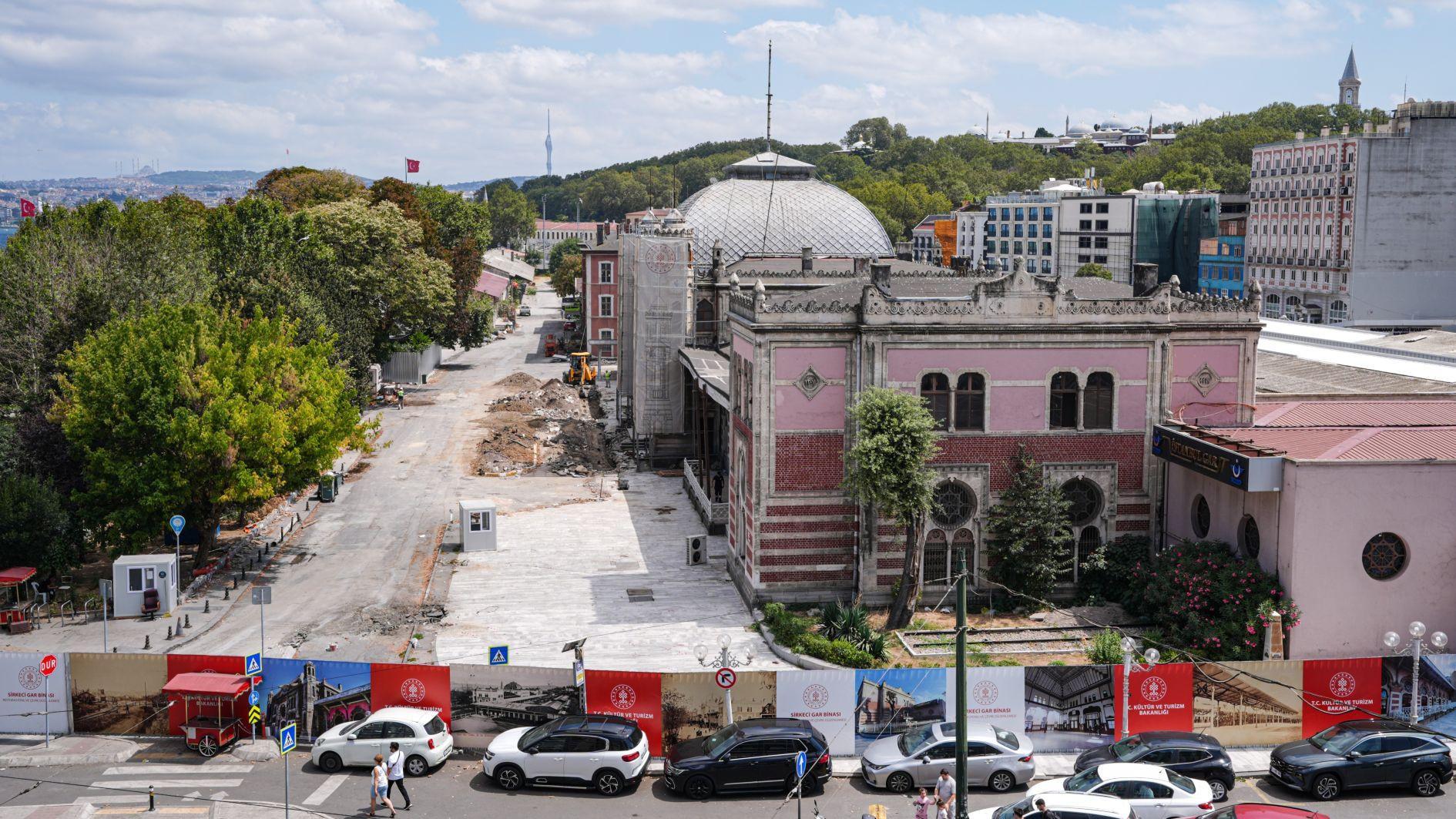
Restoration work has begun at Sirkeci Train Station, one of Istanbul’s most iconic structures, prompting the closure of its railway museum and historic halls to visitors as the landmark prepares for a cultural revival.
Initiated by Türkiye’s Culture and Tourism Ministry, the project will restore the station’s roof, stained-glass windows, facade and interior spaces in line with their original design.
Once the first phase is complete, the halls will be repurposed for use as museums, galleries and thematic cultural venues, while remaining under preservation.
When the restoration is finished, Sirkeci will host two museums: The existing railway museum and a new migration museum, highlighting the station’s role in the journeys of Turkish workers to Europe in the 1960s.
Designed as a “cultural island,” the complex is scheduled to be completed in time for next year’s Istanbul Culture Road Festival, a multi-week event featuring various cultural activities.
Culture Minister Mehmet Nuri Ersoy earlier explained that the redeveloped site will feature cultural spaces and will definitely not be turned into a shopping mall or hotel.
Railway operations at the station will continue after the works are completed.
Sirkeci Train Station, along with Haydarpaşa on the Asian side, is one of Istanbul’s two historic railway terminals.
Commissioned during the reign of Ottoman Sultan Abdulhamid II, construction began on Feb. 11, 1888, and the station opened on Nov. 3, 1890.
Designed by German architect August Jasmund, it is a notable example of Orientalist architecture, featuring a Byzantine-style stone-and-brick facade, a Seljuk-inspired carved entrance and horseshoe-arched windows.
The station is also remembered as the eastern terminus of the famous Orient Express, symbolizing the meeting point of East and West.
Known for its luxury carriages, silver tableware and elite passengers, the train first arrived in Istanbul from Paris on Oct. 4, 1883.
It continued regular service to Istanbul until 1977.
Author Agatha Christie drew inspiration from her journeys on the train to pen her celebrated novel "Murder on the Orient Express.”
Throughout the 20th century, Sirkeci was a hub for diplomatic and tourist travel between Europe and Türkiye.
In 2005, the Istanbul Railway Museum opened within the station, displaying around 300 items including train parts, photographs, station equipment and locomotive cabins.
Over the years, the station’s halls have hosted festivals, fairs and concerts.
Passenger rail services ceased in 2013 with the opening of the Marmaray tunnel line, but resumed in 2024 via a tram line.